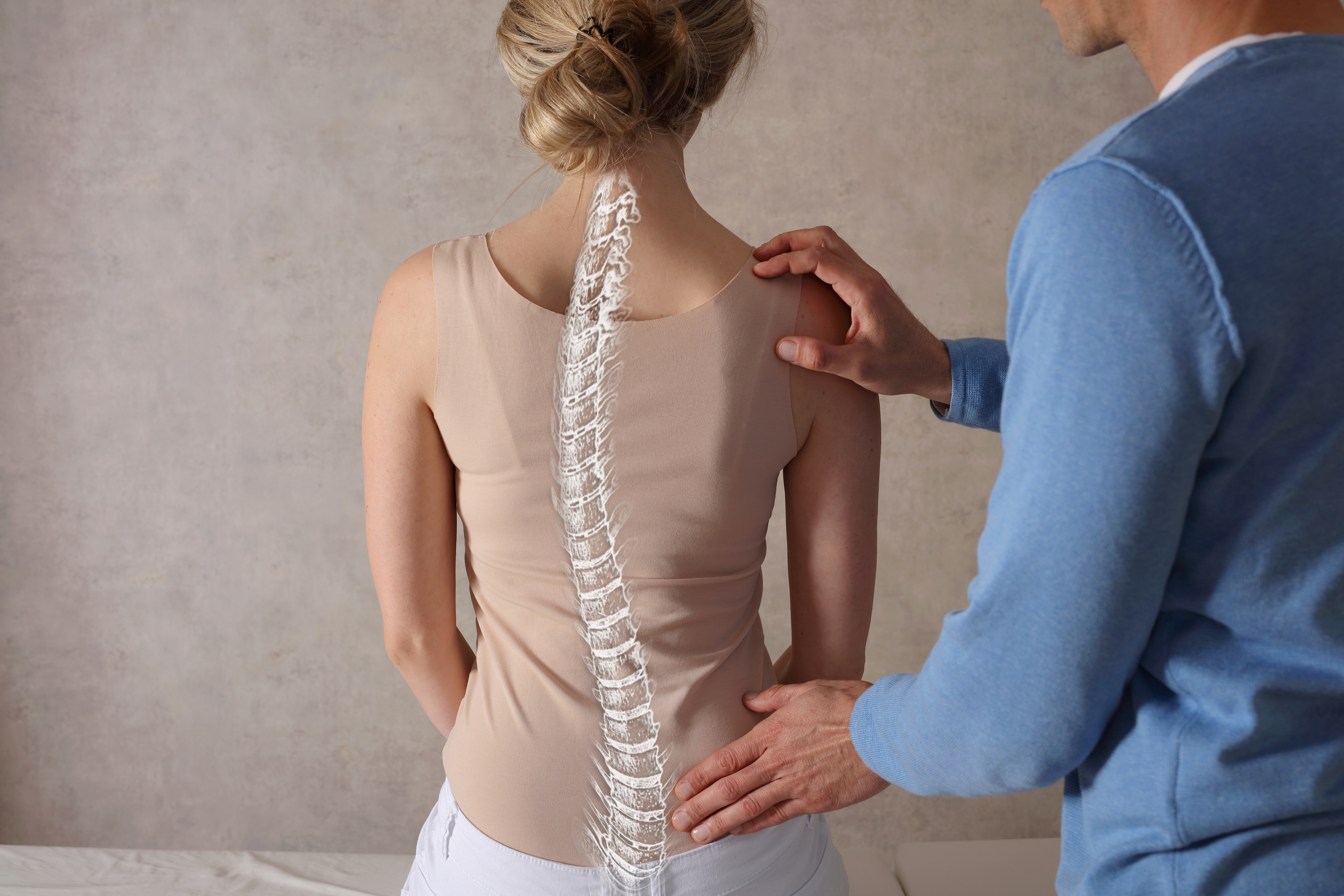Back pain is an incredibly common condition, affecting millions of people worldwide each year. While most episodes of back pain resolve on their own with rest and conservative care, there are cases where the discomfort…
All spinal deformities typically involve some form of abnormal curvature in the spine that weakens the spine and impairs its ability to function optimally. This can result in pain, neurological concerns, and mobility problems. Dealing with the symptoms of a spinal deformity can be overwhelming, but you don’t have to go through it alone.
If you’re experiencing any of the highlighted spinal deformities, a board-certified spinal surgeon at Orthopedic & Laser Spine Surgery can help get you back on track. We will be there every step of the way during your treatment to make sure you get the care and support you need for your spinal deformity.
What Are the Most Common Types of Spinal Deformities?
Any type of spinal deformity can cause discomfort, pain, and other related issues. Some of the most common types of spinal deformities that may affect individuals include:
1. Scoliosis
Scoliosis is a spinal curvature that generally develops during childhood. Scoliosis is not life-threatening, but adult-onset scoliosis can progress later in life due to disk degeneration or osteoporosis. A severe curvature can also compromise the rib cage and press the heart or lungs, making them difficult to function.
Scoliosis symptoms do not usually appear in childhood until the condition is advanced and causes back pain. Subtle posture abnormalities, elevated hips, uneven shoulder blades, and a narrow waistline are common signs of the condition.
Scoliosis Treatment
Scoliosis in children and adolescents usually only requires regular monitoring. A scoliosis brace may help prevent further curvature from developing. Surgery is usually reserved for severe curvatures and can be used to improve or slow down its progression by fusing the affected bones.
2. Kyphosis
This type of spinal deformity is caused by a forward hump in the thoracic spine or upper back. For context, the spine has two alternating curves: inward (lordosis) and outward (kyphosis), that provide balance and stability while allowing us to achieve a full range of motion. When both are bent too much, an outward curvature of the thoracic or lumbar spine occurs, resulting in a hunched back. The greater-than-normal outward curvature is usually of the spine, the upper back, and occasionally on the neck.
Symptoms and Causes of Kyphosis
Common symptoms include a back hump or rounded shoulders, spine stiffness, tight hamstrings, and mild back pain. Breathing difficulties, incontinence, loss of sensation, numbness, or tingling in the legs can present in severe cases of kyphosis.
Poor posture in childhood or slouching has also been found to cause kyphosis. A genetic link may also be the cause when the vertebrae bones do not develop properly before a child is born. Conditions such as osteoporosis, spina bifida, muscular dystrophy, spondylosis, spinal cancer, and others can increase your risk of developing kyphosis.
Kyphosis Treatment
Mild kyphosis often goes unnoticed in children until a scoliosis screening is done at school. A correct kyphosis diagnosis can be made by performing Adam’s forward bend test, which allows the doctor to examine the spine’s slope for any deformities.
Nonsurgical treatment is advised for postural and Scheuermann’s kyphosis. Bracing and physical therapy exercises may be recommended to help correct poor posture and relieve back pain caused by spinal misalignment.
3. Lordosis
Lordosis, also known as “swayback,” occurs when the spine forms an exaggerated inward curve, most commonly from the neck and lower back. Patients with the condition frequently have an excessive, backward-leaning posture. Lordosis often results in pain, discomfort, and decreased mobility if left untreated.
Lordosis can be due to various factors related to bone and muscle problems. Achondroplasia, the primary cause of dwarfism, osteoporosis, obesity, kyphosis, slipped vertebrae, and bone cancer are all risk factors. Because of the extreme spinal curvature in the neck and back, lordosis frequently manifests as muscle pain. The spinal abnormality causes muscles to overcompensate, and as they overcorrect, they tighten and spasm.
It leads to restricted mobility due to painful movement, particularly, in the lower and upper back, including the neck and shoulders.
Lordosis Treatment
A physical examination of your range of motion and spinal alignment can help rule out any abnormalities. To correctly diagnose lordosis, radiological imaging of the spine can assist in determining the exact degree of curvature. It can also reveal any cervical or spinal problems that were not apparent during the physical exam. Braces can help control spinal curvature in children and teenagers, while losing weight greatly boosts posture.
Consult Board-Certified Spine Experts at Orthopedic & Laser Spine Surgery
A healthy spine is fundamental for living a pain-free life. Don’t let scoliosis, kyphosis, lordosis, or any other kind of spinal deformity interfere with your quality of life. Working with a spinal specialist can help you get the treatment and help you need for your symptoms.
Orthopedic & Laser Spine Surgery’s orthopedic surgeons, neurosurgeons, and pain specialists work collaboratively to diagnose and offer treatment options that relieve pain, restore range of movement, and increase mobility. Please call (855) 853-6542 or complete our contact form to schedule an appointment today.

